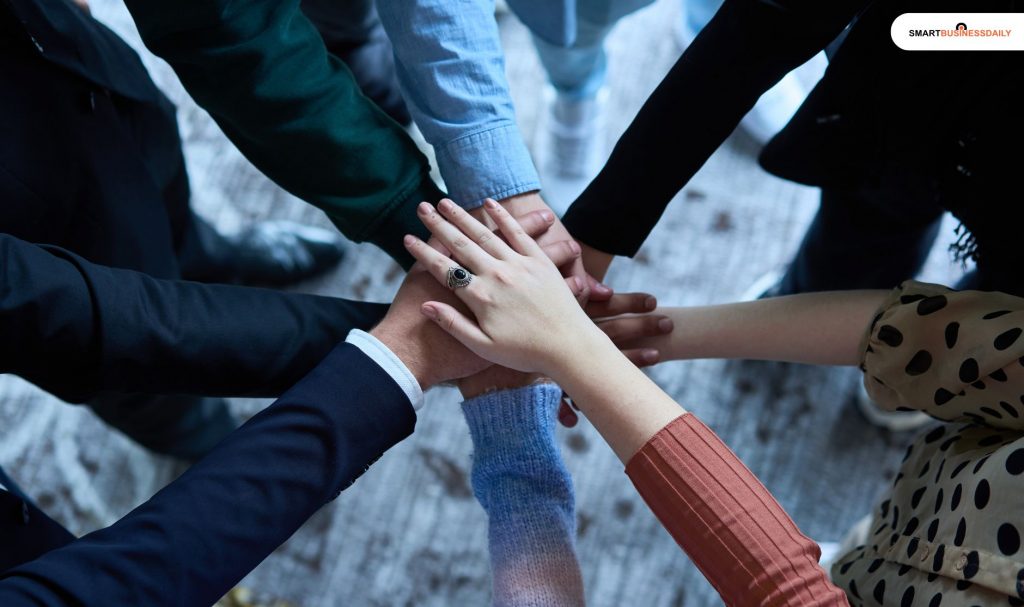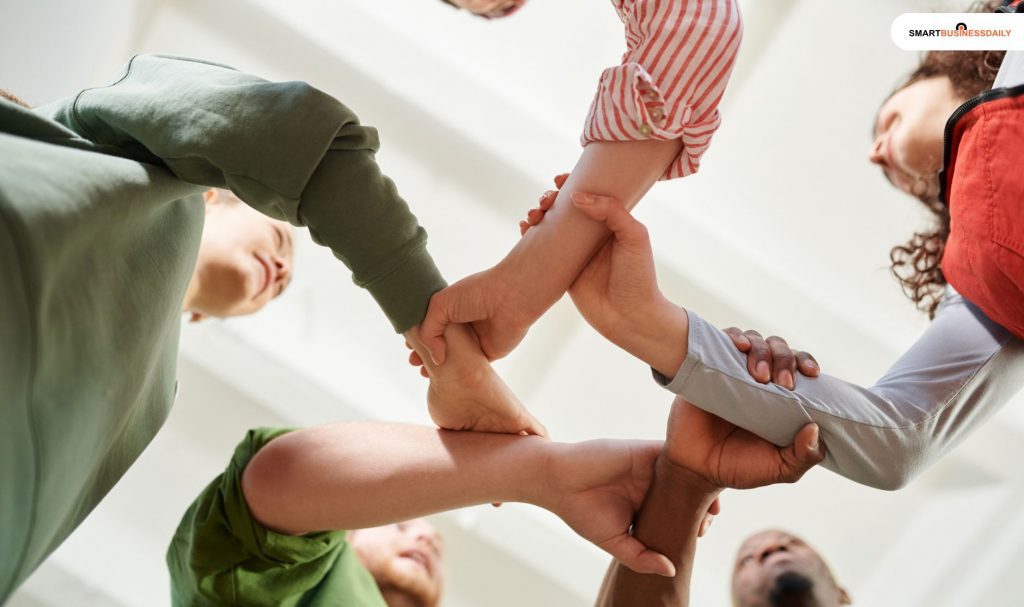Why Is It Important To Engage Communities In Preparedness Efforts? – Let’s Find Out
6 Mins Read
Published on: 02 January 2024
Last Updated on: 10 May 2025

- What Is Community Engagement?
- Examples Of Community Engagement
- What Is Community Engagement And Accountability (CEA)?
- Why Is It Important To Engage Communities In Preparedness Efforts?
- Engagement Of Communities
- Effective Strategies To Engage Communities In Preparedness Efforts
- What Is The Community Engagement and Accountability (CEA) Strategy In 2023-2025?
- Final Thoughts
Why is it important to engage communities in preparedness efforts? – Well, your answer lies in the belief that precaution is always better than the cure!
This can help the community reduce disaster response time and ensure the success of rescue and recovery operations.
If a community is involved in disaster preparation, it enables taking into account the skills, needs, challenges, and resources of everyone.
Hence, to learn more, read on through to the end of the article.
| 📝 The Key Takeaways from This Article: ◼ You will learn about community engagement in general. ◼ You will know why engaging communities in preparedness efforts is important. ◼ We will discuss the major challenges governments and institutions face in this regard. ◼ At the end of the blog, we will recommend some effective strategies that you can use for community preparedness. |
Hence, to learn more, read on through to the end of the article.
What Is Community Engagement?

According to the World Health Organization, “Community Engagement is a process of developing relationships that enable stakeholders to work together.
Addressing health-related issues and promoting well-being are also required to achieve positive health impact and outcomes.”
Engaging communities helps promote their health and well-being. At its core, community engagement allows communities to change their.
- Behavior
- Policies
- Environment
- Programs
- Practices
There are various levels of community engagement, which help you to find the level of involvement among people.
Look, as we all know, disasters can take various forms and shapes. It is always advisable to know about their variety.
You must always be well-equipped to prevent any damage from any sort of disaster, from natural disasters and flooding to hazards like cyberattacks, active shooters, and health crises.
On the other hand, it is also important that you involve towns and communities in local, state, and federal government disaster preparation plans.
This will ensure that the community’s unique skills, resources, needs, challenges, etc., are considered.
Hence, when you create community engagement, ensure that everyone is safe and involved in the recovery process.
It can also increase trust in national authorities. Hence, communities will also have access to tools and skills so members can help in times of crisis.
Examples Of Community Engagement

If you are wondering, “What is community engagement?” Well, it includes activism, volunteer work, tutoring, community gardening, donating blood, environmentalism, community gardening, and much more.
There are numerous forms of community engagement that you can practice. Some of these include:
- You can maintain a better community garden.
- Also, you can participate in blood drives in your locality.
- You can help local farmers set up the farmers’ market.
- Furthermore, you can always advocate for other people.
- You might try creating several support groups in your locality.
- You must vote during the local elections.
- Also, you may attend as well as participate in town hall and city council meetings.
- You can always try to volunteer at an animal shelter, a local food bank, and a homeless shelter.
What Is Community Engagement And Accountability (CEA)?
Community engagement and accountability (CEA) refers to working with community members as equal partners.
What will you need to do as an active participant? You have to listen to their opinions and use their feedback to shape our actions.
The CEA approach will help you build trust and acceptance, which are vital for your lifesaving work.
You must always ensure that people can reach out to you and that you respond to their feedback and needs.
Why Is It Important To Engage Communities In Preparedness Efforts?

If you are wondering why is it important to engage communities in preparedness efforts, the answer is much simpler than you think.
You have to be well aware that communities that are more engaged in preparedness efforts will feel more confident handling future challenges.
They will also be able to communicate better with each other, which will also enable them to receive feedback about disaster plans.
When you do this, you also ensure that communities will be able to use their plans according to their members’ unique needs while considering society’s traditions, beliefs, and norms.
According to LinkedIn.com, “Community-based disaster preparedness (CBDP) is a process of involving and empowering local people to reduce the risks and impacts of natural and human-made hazards. CBDP aims to enhance the capacities, resources, and networks of communities to cope with and recover from disasters.”
Community preparedness is about preparing the community for disastrous events while lessening the impact of the disaster.
The government is responsible for creating, testing, and preparing emergency disaster operation plans.
Preparedness is what the government, NGOs, community members, and citizens perform on a shared basis.
In this situation, everyone works as a team so that all can assist in saving the nation from damage.
They can also help keep society resilient when it is affected by risks such as earthquakes, natural disasters, human acts, tornadoes, terrorism, accidents, unexpected pandemics, etc.
Engagement Of Communities
Engaging communities in preparedness efforts improves community strength and an effective preparedness mentality.
This also helps better to understand the needs and demands of the particular region. This can help locals combat and prevent the disaster’s effects and risks.
In addition, increased trust between organizations and communities, acquired through community engagement, further results in better coordination and activity during crises.
Community preparedness also influences disaster impact reduction. It helps educate the public to reduce threats during a disaster.
Furthermore, communities can also create connections with local, state, and federal officials to identify and mitigate climatic dangers.
Effective Strategies To Engage Communities In Preparedness Efforts

You need to be able to identify and analyze various threats, vulnerabilities, and challenges before dealing with any disaster or hazard.
According to LinkedIn.com, “The first step of CBDP is to identify and analyze the potential threats and challenges that your community faces. You can use participatory tools such as
- Hazard mapping
- Risk ranking
- Vulnerability assessment
- Historical timeline
You can incorporate these tools to collect and visualize data on the frequency, intensity, and location of hazards and your community’s exposure, sensitivity, and adaptive capacity.”
The following are some of the most effective strategies and best practices that you can urge the communities to carry out to engage communities in efforts of preparedness:
- You can start by ensuring a safe and secure environment for communities to engage with each other.
- The community must also test various techniques of engagement.
- You must see that the community must have a sense of purpose.
- There should be good communication among neighborhoods about various needs and dangers.
- Authorities must encourage community engagement at multiple federal, state, and local levels.
- You have to make sure the community engagement training is fun and activity-oriented.
- Also, you should ensure that effective cooperation among communities exists to make space for every team member.
- Authorities and trainers must conduct training and outreach sessions to prepare the community for climate events or disasters.
What Is The Community Engagement and Accountability (CEA) Strategy In 2023-2025?
The International Federation of Red Cross and Red Crescent Societies (IFRC) has developed the “Strategy 2030.”
This strategy makes it very clear to you why it is important to engage communities in preparedness efforts.
What does this imply? Let me simplify it for you. This means putting local communities at the center of change to make our actions effective, inclusive, and sustainable.
To do this, the IFRC Secretariat and National Societies need to engage with communities more efficiently and be responsible for any issues that may arise.
This Community Engagement and Accountability (CEA) strategy outlines key actions for the next three years to help us meet the “Movement-wide Commitments for Community Engagement and Accountability” established at the 2019 Council of Delegates.
It builds on successful practices that strengthen community engagement while tackling the barriers that hinder progress.
Final Thoughts
Why is it important to engage communities in preparedness efforts? I hope you have learned the importance of engaging communities in preparedness efforts. Engaging communities helps in fighting and mitigating the disaster for the better. Apart from that, it also helps in increasing trust among communities.
However, you will also need to make sure that you are using the effective strategies mentioned above to prepare communities for disasters. Do you have any more info to add? Share your ideas and opinions with us in the comments section below.
Read Also:



















Comments Are Closed For This Article